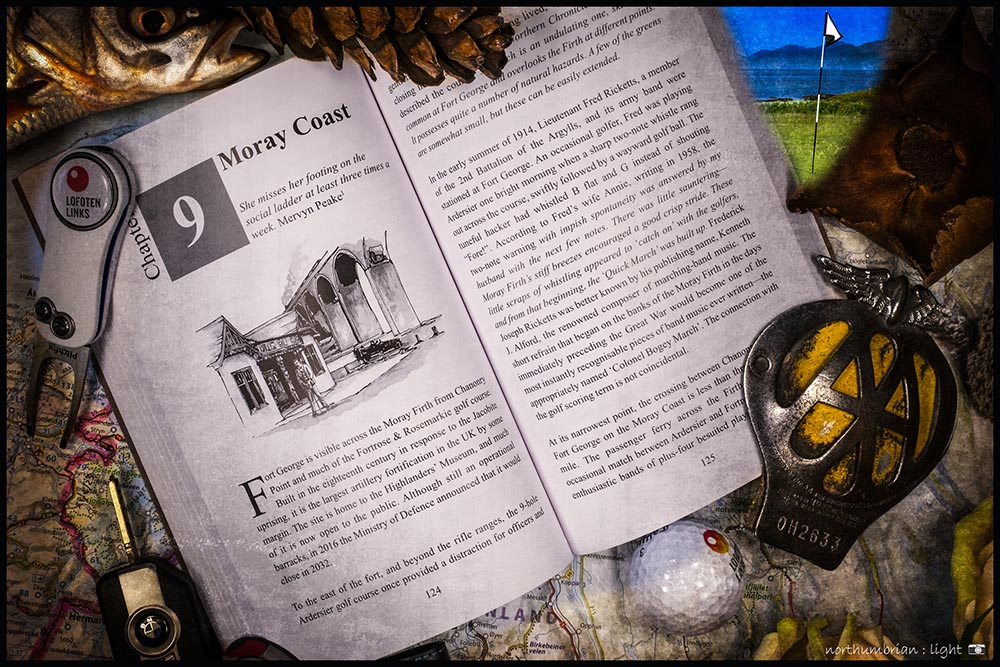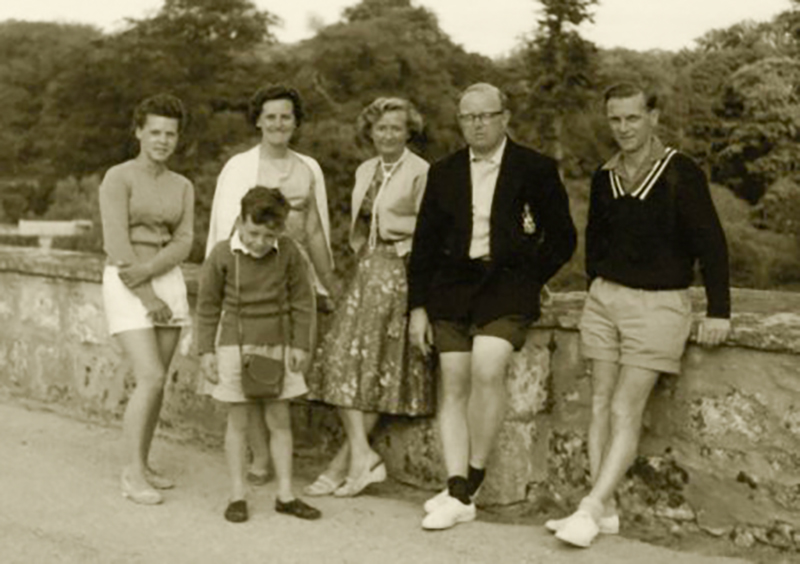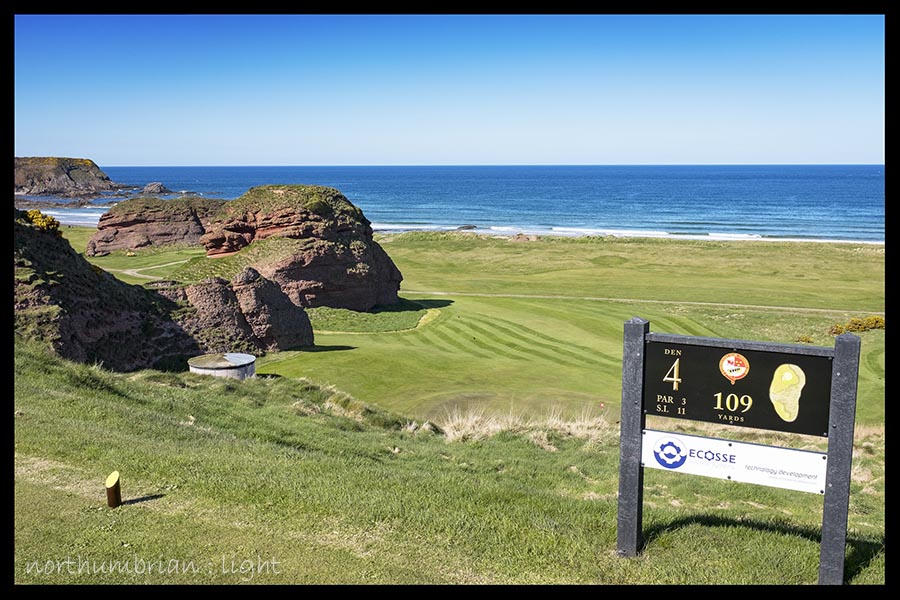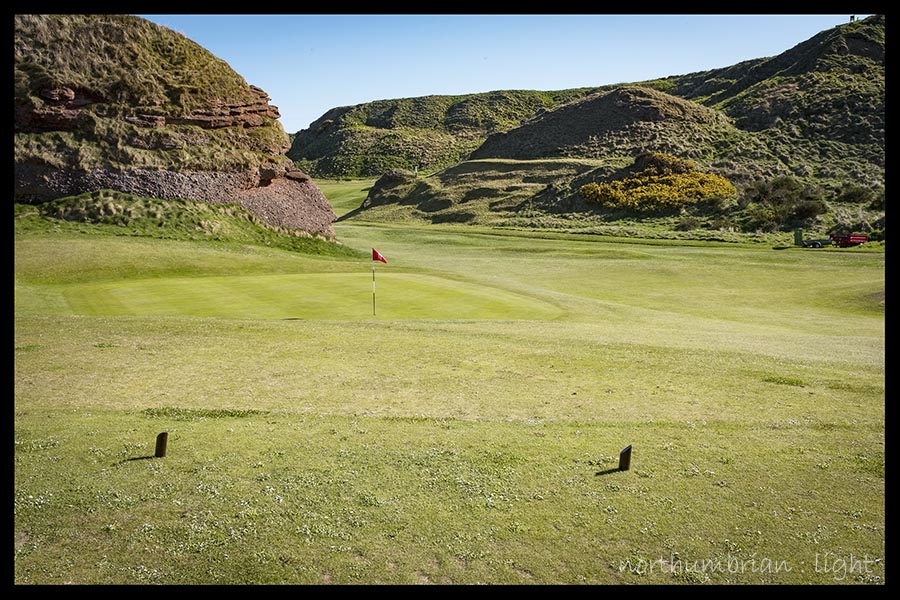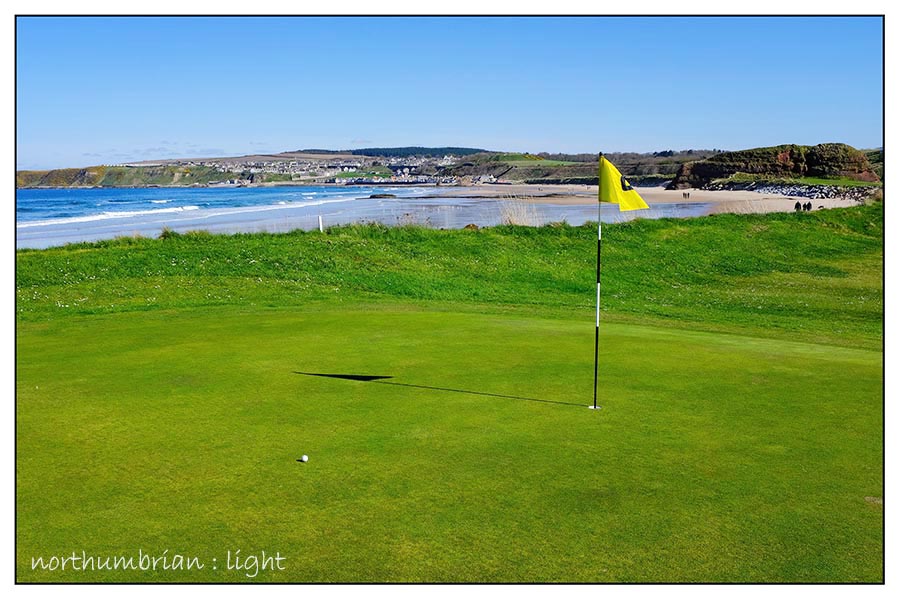Chapter 9: In the early summer of 1914, Lieutenant Fred Ricketts, a member of the 2nd Battalion of the Argylls, and its army band were stationed at Fort George. An occasional golfer, Fred was playing Ardersier one bright morning when a sharp two-note whistle rang out across the course, swiftly followed by a wayward golf ball. The tuneful hacker had whistled B flat and G instead of shouting “Fore!”. According to Fred’s wife Annie, writing in 1958, the two-note warning with impish spontaneity was answered by my husband with the next few notes. There was little sauntering—Moray Firth’s stiff breezes encouraged a good crisp stride. These little scraps of whistling appeared to ‘catch on’ with the golfers, and from that beginning, the ‘Quick March’ was built up. Frederick Joseph Ricketts was better known by his publishing name, Kenneth J. Alford, the renowned composer of marching-band music. The short refrain that began on the banks of the Moray Firth in the days immediately preceding the Great War would become one of the most instantly recognisable pieces of band music ever written—the appropriately named ‘Colonel Bogey March’. The connection with the golf scoring term is not coincidental.
Tag Archives: Cullen
The Route Home
The route for the first book determined itself. The 9-hole courses on the Scottish northwest coast are limited so, it was a simple task of joining the dots from Lochcarron, northwards to Durness. Returning south, beyond Perth, has been an altogether different proposition, there were simply so many choices. In the end, it came down to expediency – I have been lingering in the north for too long and I need to get home. There are fine 9-hole courses in the Scottish Borders I have played for years so, it seemed logical to return via familiar roads. I then realised there was a direct connection between my final destinations and roads didn’t enter into it – the Lauder Light Railway, North British Railway, the Border Counties Railway and the Hexham & Allendale Branch Line. I simply needed to board an imaginary train and I would be home, where ‘home’ is the old Allendale course at Thornley Gate.
Golf in the Wild – Going Home will visit the following courses, with many a diversion along the way: Reay, Wick/Reiss Links, Lybster, Bonar Bridge, Portmahomack, Castlecraig (closed), Fortrose & Rosemarkie, Covesea, Cullen, Rothes, Blair Atholl, Lauder, Melrose, Newcastleton and Allendale (Thornley Gate).
The eagle-eyed will spot a few 18-hole courses among this selection. In the case of the far north, this is simply because there are no 9-hole courses to play – and anyway, Reay and Reiss Links are suitably wild and simply superb.
The old course at Thornley Gate was only a half mile walk from the station, a good deal closer than the centre of Allendale after which the station was named (Catton would be more appropriate). This was a problem repeated along many stretches of these old lines – stations sited too far from the communities they served. When bus services were introduced, rail passenger numbers inevitably went into steep decline.
Cullen Links
Cullen Links, the shortest links course in Scotland, features in this video – Tourist Sauce (Scotland Golf): Episode 8, Cullen Golf Club – it provides a neat audio-visual explanation of why this unique and wonderful course will feature in the sequel to Golf in the Wild. The video must have been shot in high summer when the fairways were parched after that long-forgotten heatwave – when I played earlier in the year, it was all lush green:
The Stage is Empty – Cullen 2018
I was last here in 1958 or 1959 but let’s just assume it was ’58 for the neatness of a sixty year symmetry. If I am to return again, I will not have the option of leaving it so long; time is running out.
I have vague memories of the golf course behind the beach; I remember the gasometer dominating the eastern end of the town, now demolished; I remember the string of viaducts that create a theatrical backdrop to the bay; I remember mithering for a pen-knife emblazoned with a kilted Scot and bagpipes and almost immediately slicing my thumb, blood everywhere; I remember gurning in the holiday photographs, a different pose and face for every occasion; I remember a determination to go in the sea everyday, regardless of the weather and, throughout everything, I remember my teenage sister as unconvincingly grown-up and immensely irritating. Most of all, I remember the stinging slap to the back of an unprotected leg, my mother the executioner, never my dad.
All this time gone by and here I am again, standing outside the Bay View Hotel, now a private house, my thoughts no longer centred on pen-knifes and the multifarious ways to irritate an irritating sister. These many years later I am here to play golf but how different it might all have been. Dad was accomplished at cricket, football and tennis, so why not golf. If we had walked Cullen’s fairways in the 1950s what memories might we have shared, how often might we have returned. No first nor final rounds – dad, I hardly knew you:
Two world wars, economic depressions, genocidal dictators, material privations, the ominpresence of death … enduring such stuff is not propitious for the embrace of affective ostentation, for the desire to get in touch with our inner entitlements, for the infantile need to share our pain, for the comfy validation of our self-pity, for the slovenly annihilating of our restraint, for the quashing of our shame.
Jonathon Meades – An Encyclopaedia of Myself
Sixty years on, the stage is empty, my audience gone.
Nothing quite prepares you for the joy of playing Cullen Links. It may be the shortest of the 84 true links courses in Scotland but the lack of distance does not diminish the test nor the enjoyment. There are ten par threes, some blind, some long, some protected by rock and some a combination of all three – this is crazy golf on the grand scale and I love it.
